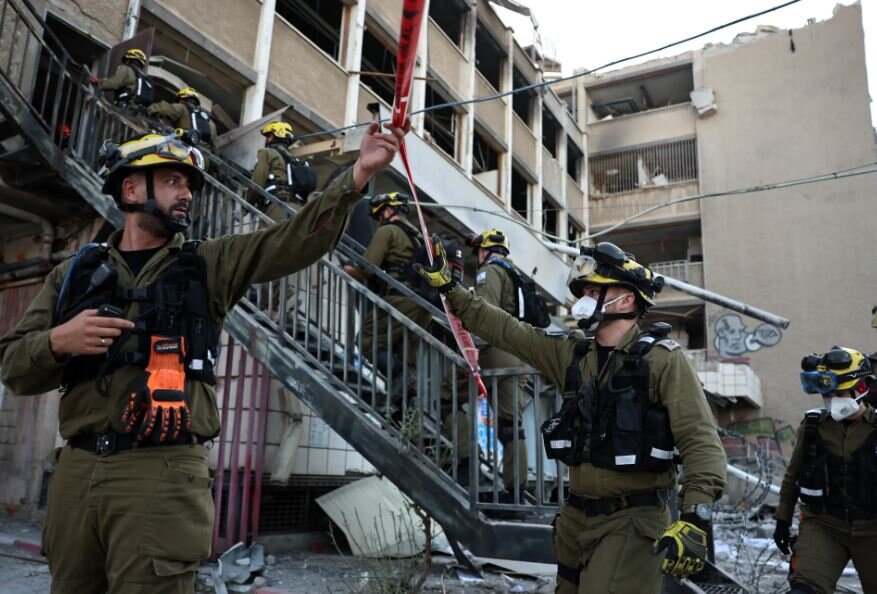Iran-Israel war: A clash of missiles, narratives, and digital battlegrounds

TEHRAN – The recent 12-day war between Iran and Israel wasn’t just another flare-up in the volatile West Asia region—it was a seismic shift. While the exchange of missiles and drones lasted less than two weeks, the war exposed deeper truths about power, deterrence, and the new era of hybrid warfare where social media narratives could be as critical as military strikes.
How it began: A surprise attack and a swift response
Israel was the party that began the war. It launched airstrikes against Iranian nuclear, military, and civilian infrastructure in the early hours of June 13, with Prime Minister Benjamin Netanyahu later taking to the public stage to claim the regime had carried out a “preemptive” move to stop Iran from developing nuclear weapons.
But Iran’s retaliation was swift and unprecedented: hundreds of missiles and drones rained down on the occupied territories from the first day of the war until the very last minutes that led to a de fecto ceasefire. At least 22 offensive waves were used to “punish” Israel for the war it had started, as promised by Leader of the Islamic Revolution Ayatollah Seyyed Ali Khamenei. For the first time in its history, Israel’s famed air defenses struggled under the constant barrage, even though several other regional and Western forces had come to its rescue. By the end of the war, the long-held myth of the regime’s invincibility had shattered.
Three wars in one: Military, media, and minds
Beyond the explosions, the conflict played out across three interlocking battlefields, each shaping the outcome as much as the missiles themselves:
1. The Military War – A high-tech showdown where Iran shattered expectations by launching its first direct attack from its own soil, proving its long-range missile capabilities could penetrate Israel's famed Iron Dome. Meanwhile, Israel's response—a mix of aerial interceptions and covert cyber strikes—revealed both its technical prowess and unexpected vulnerabilities. The rules of engagement in the West Asia had changed overnight.
2. The Media War – This conflict saw the birth of the first truly "hashtag war," where victory was measured in viral moments as much as military gains. Iranian media flooded Telegram channels with missile launch videos edited like Hollywood action scenes, while Israeli influencers turned bomb-shelter selfies into symbols of resilience. Both sides employed armies of online trolls, but the real surprise was how ordinary citizens became frontline reporters—filming missile trails with smartphones, making memes of leaders, and turning social platforms into real-time war rooms.
3. The Psychological War – The deepest battle was fought in the minds of citizens. In Tel Aviv, the wail of sirens shook Israel's sense of security to its core—could the regime protect its citizens if Iran could strike at will? Across the region, from Riyadh to Ankara, leaders watched carefully: the psychological barrier of direct Iran-Israel conflict had been broken, rewriting the playbook of West Asian power struggles.
This was hybrid warfare at its most potent—where a single missile launch could be simultaneously a military tactic, a viral video clip, and a psychological turning point. The side that mastered all three dimensions, not just the physical battlefield, would gain the upper hand in conflicts to come.
Mapping the Hebrew-speaking discourse: Three key narratives
An analysis of Hebrew-language discourse throughout the Iran-Israel war reveals three dominant narratives:
1. The pro-Netanyahu narrative: This faction projected an image of a powerful, victorious Israel focused on eliminating the Iranian threat. This faction was hierarchical, excelling in narrative production rather than broad reach.
Key themes included:
- Israel’s absolute military superiority
- The left-wing’s incompetence
- The divine and historical legitimacy of war
- Netanyahu’s charismatic leadership
- Alignment with the Western global order
Alongside these were praises for military operations, mockery of leftists, and justifications for war within a deterrence framework. This narrative sought to reinforce Netanyahu as Israel’s sole savior, employing religious symbolism, admiration for U.S. leaders (especially Trump), and branding dissenters as "traitors."
2. The anti-Netanyahu narrative: In contrast to the establishment’s authoritarian narrative, Netanyahu’s critics presented a fragmented, crisis-ridden Israel. They outpaced the pro-Netanyahu faction in network breadth and diversity.
Recurring themes included:
- Netanyahu’s exploitation of war for personal gain
- Collapse of public trust
- Security and economic incompetence
- Government media hypocrisy
- The need for structural reforms
This discourse critiqued Netanyahu’s cult of personality, exposed corruption, warned of internal collapse, and called for a return to “democratic” principles—challenging not just the war but the political architecture behind it.
3. The pro-Iran narrative: This narrative described Iran’s actions in the war not just as defensive but as retaliatory and even emancipatory. This group was marginal but still present.
Central themes included:
- Iran’s military prowess and right to legitimate response
- Israel’s declining power
- The Israeli military’s incompetence
- Divisions within Zionist society
- The ultimate failure of Zionism
Through symbolic language, this discourse blended intimidation and glorification of Iran’s strength, portraying Israel as a fragile, declining entity.
Battles end, but narratives endure
Though brief, the 12-day war was a strategic litmus test for Iran and Israel. Iran showcased its missile capabilities and deterrence, while Israel, despite vulnerabilities, recalibrated its military-media apparatus.
Yet, the most enduring conflict lies in the cognitive, psychological, and discursive layers. In this arena, public opinion, narrative warfare, and digital activism proved as decisive as weapons. This report, combining network data mining, discourse analysis, and war dimensions, demonstrates that modern warfare is not just fought in the skies and on land—but in the battleground of meaning, narrative, and audience. The future of this conflict will hinge more than ever on the interplay between hard power and soft authority.
Leave a Comment